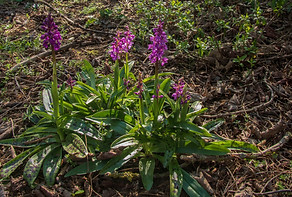
Nature Book
Wild Flowers
There are 369,000 species of Flowering plants the UK this is 94 percent of all plants in the United Kingdom. Some of these plants are familiar to use all like the daffodil and daisy and some need a closer look. To be able to identify plants it is useful to know a bit of knowledge about their different parts. The four basic parts of the plant are roots, stems, leaves and flowers. The characteristics of each part can vary enormously between each species. for example the leaves can vary from single, pinnate, palmate, pinnate with lobed leaves and palmately lobed. So it is worth getting to know some basic definitions to save looking them up every time.
Finding Wild Flowers
Before you can identify flowers , you need to find them first. Important things to remember are it's life cycle and it's habitat (were they are more likely to be found).
Coastal Flowers
The coast is a great place to find flowers. Unspoilt coast is made up of different habitats with each having different species of flowering plants. Theses include rocky cliffs, soft cliff, sand dunes, saltmarshes, shingle and coastal grasslands.
Meadow Flowers
Meadows are grassy areas which are mown for hay. If fertilisers or weedkillers aren't used these make great places for flowers. Sadly we have lost a lot of our meadows or have been turned into areas of green grass. Most meadows are best May - June.
Farmland Flowers
Most of the countryside is made up of intensively farmed land. Although large range of land is no longer suitable for flowers, there are still a few places where some manage to survive. The edges of fields often have a rich mixture of plants, hedgerows and old lanes are always good places to look.
Woodland Flowers
Woodlands are really good places for flowers and wildlife depending what type of woodland it is. Ancient woodlands are the best with a mixture of different deciduous trees with sunny clearings and glades, while conifer plantations are the worst. Woodland that has been is regularly coppiced or cut back are especially rich in flowers. The peak of flowering is nearly always in spring or early summer when their is less leaves on the trees to block out the sunlight.
Heathland Flowers
Heathlands are open and wide places where heather, ling and gorse are the main plants. Heaths can be an whole area or be fragmented by parts of birch, juniper, pine or other trees that invade them. In fact, heaths are not natural and need constant management or will revert back to forest. Heaths were created by the clearance of forest by early farmers. The presence of acidity soil caused the cleared land to develop into heathland. Best time to visit heathland is late summer when the heathers in flower which also attach lots of different insects.
Wetland flowers
Wetlands are areas of land that are flooded with water that is near the surface of the soil for much of the year. This can be permanently or seasonally and make natural flood defences, soaking up extra water like a giant sponge. Depending on the soil and the climate, different types of wetland develop; for example, bogs are very acidic, whilst fens are more alkaline, tho both are very peaty. These wetland areas are very rich in flowers and unusual plants. Best time to visit is from midsummer to early autumn for a range of flowering species.






